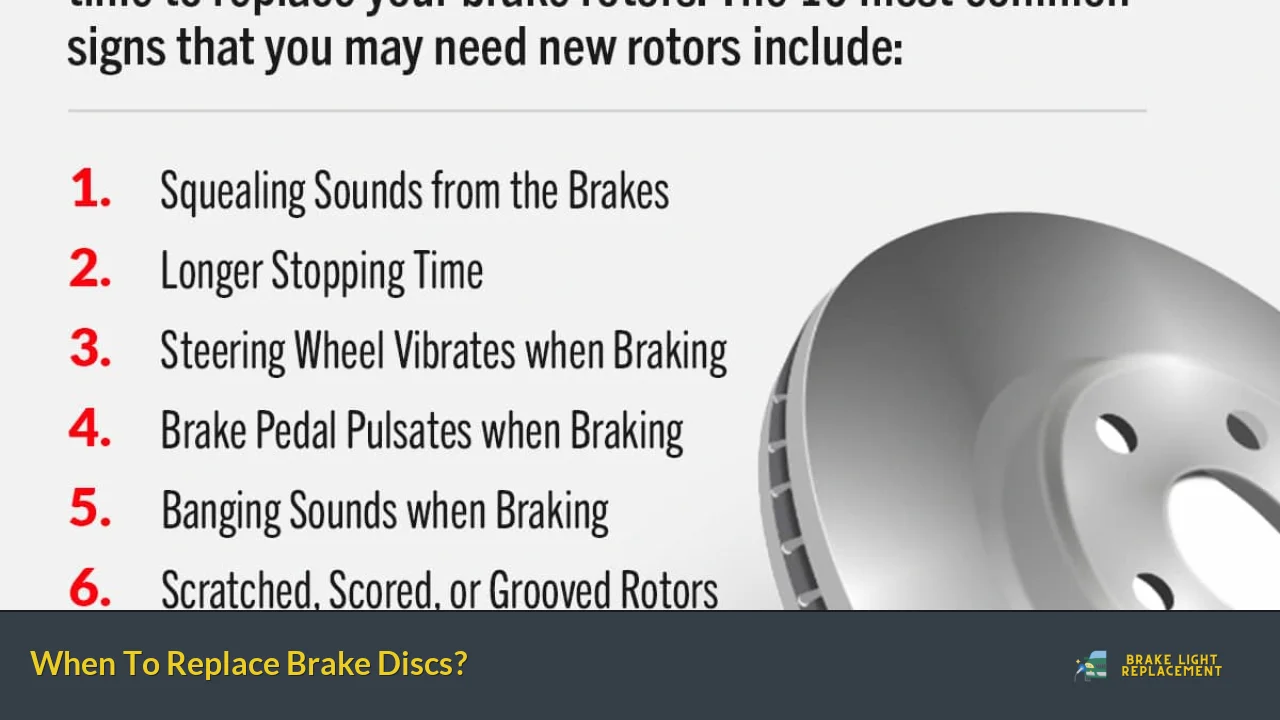Brake discs are a critical component of your vehicle’s braking system, responsible for slowing down or stopping the vehicle when the brakes are applied. Over time, brake discs can wear out due to various factors including driving habits, road conditions, and the quality of the materials used. Knowing when to replace brake discs is essential for maintaining safety and performance in your vehicle. This guide will help you understand the signs of wear, factors affecting longevity, and the best practices for replacement.
Signs of Worn Brake Discs Recommended Action Noisy brakes Replace immediately Vibrations during braking Inspect and possibly replace Grooves or cracks on the disc surface Replace as soon as possible Increased stopping distance Check and consider replacement Discs below minimum thickness Replace immediately
Understanding Brake Disc Wear
Brake discs, also known as rotors, experience significant stress during operation. Each time you apply the brakes, friction is generated between the brake pads and the discs. This process generates heat and causes wear over time. The rate at which brake discs wear can vary widely based on several factors:
- Driving Style: Aggressive driving with frequent hard braking can accelerate wear.
- Vehicle Type: Heavier vehicles exert more force on brake components, leading to quicker wear.
- Brake Pad Material: The composition of brake pads can affect how much they wear down the discs.
- Environmental Conditions: Driving in wet or corrosive environments can lead to rust and pitting.
Understanding these factors can help you take proactive measures to extend the life of your brake discs.
Signs That Indicate Brake Disc Replacement
Recognizing the signs that your brake discs need replacement is crucial for your safety. Here are some common indicators:
- Noisy Brakes: If you hear squeaking or grinding noises when applying the brakes, it may indicate that your brake pads are worn down and damaging the discs.
- Vibrations: If you feel vibrations in the steering wheel or brake pedal when braking, this could mean that your brake discs are warped or unevenly worn.
- Visible Damage: Inspecting your brake discs for grooves, cracks, or significant rust is essential. Any visible damage usually warrants immediate replacement.
- Increased Stopping Distance: If you notice that your vehicle takes longer to stop than usual, it may be a sign that your brake discs are worn out.
- Thickness Measurement: Each brake disc has a minimum thickness specification stamped on it. If your disc measures below this thickness, it must be replaced.
Regular inspections can help catch these issues early, preventing more severe problems down the line.
Factors Affecting Brake Disc Longevity
Several factors can influence how long your brake discs last before needing replacement:
- Quality of Materials: Higher-quality brake discs tend to last longer than cheaper alternatives. Investing in good quality parts can save money in the long run.
- Driving Conditions: Frequent driving in stop-and-go traffic or hilly terrain can lead to faster wear compared to highway driving.
- Maintenance Practices: Regular maintenance checks can identify issues before they become serious. Keeping your braking system clean and well-maintained is essential.
- Brake Pad Compatibility: Using incompatible or low-quality brake pads can lead to increased wear on your discs. Always consult with a professional about suitable pad options for your vehicle.
Understanding these factors allows you to make informed decisions about maintenance and replacements.
Best Practices for Replacing Brake Discs
When it’s time to replace your brake discs, following best practices ensures optimal performance:
1. Replace Pads Simultaneously: It is generally recommended to replace brake pads when changing discs. This ensures both components work optimally together.
2. Use Quality Parts: Invest in high-quality brake discs and pads from reputable manufacturers to ensure longevity and performance.
3. Follow Manufacturer Guidelines: Always adhere to your vehicle manufacturer’s specifications regarding installation and torque settings for bolts.
4. Proper Installation: Ensure that new discs are installed correctly without any debris on the mounting surface. This prevents uneven wear and potential damage.
5. Break-In Period: After replacing the discs and pads, allow a break-in period where you avoid heavy braking. This helps ensure proper seating of the new components.
By following these practices, you can maximize the lifespan of your new brake components while ensuring safe driving conditions.
FAQs About When To Replace Brake Discs
- How often should I replace my brake discs?
Typically, brake discs should be replaced every 60,000 to 70,000 kilometers depending on usage. - Can I just replace my brake pads without changing the discs?
If the discs are still within their minimum thickness and show no signs of damage, you may only need to replace the pads. - What happens if I ignore worn brake discs?
Ineffective braking performance can lead to longer stopping distances and increased risk of accidents. - How do I check if my brake discs need replacing?
Inspect visually for grooves or cracks and measure thickness against manufacturer specifications. - Is it safe to drive with worn brake discs?
No, driving with worn or damaged brake discs poses serious safety risks.
In conclusion, being aware of when to replace your brake discs is vital for ensuring safety on the road. Regular inspections combined with knowledge of warning signs will help maintain optimal braking performance and prolong the life of both your brakes and overall vehicle safety.
